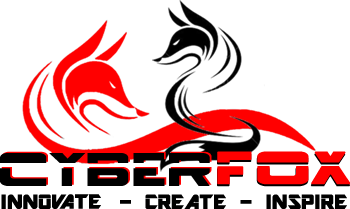Instructional design is the design of learning experiences and learning materials in a way that develops in the gaining and application of knowledge and skills. The instructional design follows a system of determining needs, designing processes, developing materials, and evaluating their effectiveness. Proven methods of instructional design include ADDIE and Agile.
Agility is the ability to move quickly and efficiently. When developing an Agile eLearning course, the development process is designed to include both of these factors. The end result is a far more efficient system for both you and students alike, in which you’ll often produce small segments of usable content instead of taking a long time to create a single course.
What is Agile eLearning?
Using the Agile eLearning method, course content is developed using short, frequent cycles which are commonly known as sprints. It focuses on participation, rapid prototypes, regular feedback, and reducing course development time.
Agile eLearning is different from other eLearning development processes because it uses input from a wide range of stakeholders which includes your learners. This is done early in the process and delivers usable results regularly and efficiently. If something isn’t working effectively, or if tangible feedback is received, changes are addressed rapidly.
You’ll find that managing the eLearning development process is far more efficient when using the Agile method. Welcoming feedback from a wide section of stakeholders means that you will produce engaging and effective course content, while simultaneously being made aware of any defects, glitches, or shortcomings.
THE PROCESS OF AGILE eLEARNING
STEP 1

Learning course designers and stakeholders, including students, meet and discuss the goals and objectives of the eLearning project. Members are welcome to work together, share thoughts and ideas, and identify any problems they are encountering with existing course content. These meetings are known as “scrums”.
STEP 2

The total course is split into segments or features, with all scrum members agreeing on how each segment functions and what it accomplishes. Each segment of the course content will be developed separately, one at a time.
STEP 3

The accepted segment of content is developed in what is now called a “sprint”. Once the segment is developed, it is assessed and evaluated by all participants. Any issues raised are addressed and fixed quickly. There may be many sprints for each course segment until it is considered ready to use.
STEP 4

If all participants are satisfied with the segment in question, the team progresses on developing the next segment of the course. These sprints continue until the eLearning project is completed in full.
ADDIE vs AGILE eLEARNING
ADDIE has been around since the 1950s and is a more traditional instructional design model. ADDIE is an acronym for the five stages of the development process namely Analysis, Design, Development, Implementation, and Evaluation.
The ADDIE model relies on each stage being completed in a specific order and is considered to be a firmer process, whereby stakeholders needs are determined before development begins, and one single version of the product is released at the end of the cycle.
By contrast, an Agile project tends to allow stakeholders to jump right in, rapidly produce segments of useable content, evaluate the segments, fix any defects, and expand them over several tight sprints.
Items missed during the analysis and design phases of ADDIE may not be noticed fast enough, which often makes it difficult to go back and modify. The short sprints and feedback offered by Agile eLearning mean changes can be applied easily before moving on.
Agile eLearning focuses on progress by providing a steady stream of useable deliverables and outcomes.
Overall, the Agile eLearning development process addresses a variety of shortcomings presented by the ADDIE model, which primarily is its lack of speed and flexibility.

THE BENEFITS OF AGILE eLEARNING
Agile eLearning is one of the fastest growing trends in the training and development field, and it presents many advantages. Some of these are:
- It promotes greater involvement by bringing stakeholders together very early in the process, and regularly throughout which leads to fewer misunderstandings and superior course content delivery.
- It enables opportunities for regular feedback by producing course segments that stakeholders can use and readily provide comment on.
- Compared to the rigidity of the ADDIE model, Agile eLearning is flexible and can change direction more easily if feedback requires it to do so
- Frequent testing is a fundamental element of Agile eLearning development therefore it increases functionality. This makes it easier to correct segments that don’t work efficiently.
Finally, the foundation of deploying Agile eLearning in any organization is ensuring you use a flexible and efficient Learning Management System (LMS) to deliver your courses.
